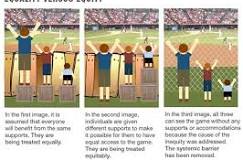The Civil Rights Movement
The Civil Rights Movement was a pivotal time in American history that aimed to secure equal rights and opportunities for African Americans. Spanning from the late 1940s through the 1960s, this movement sought to end racial segregation and discrimination against Black individuals in the United States.
Key figures such as Martin Luther King Jr., Rosa Parks, Malcolm X, and many others played significant roles in advocating for civil rights through nonviolent protests, legal challenges, and grassroots organizing. Their efforts led to landmark events like the Montgomery Bus Boycott, the March on Washington for Jobs and Freedom, and the passage of the Civil Rights Act of 1964.
One of the most iconic moments of the Civil Rights Movement was Dr. King’s “I Have a Dream” speech delivered in front of the Lincoln Memorial in 1963. His powerful words called for an end to racial injustice and inspired millions to join the fight for equality.
Despite facing violence, intimidation, and systemic barriers, civil rights activists persevered in their struggle for justice. Their courage and determination paved the way for significant advancements in civil rights legislation and societal attitudes towards race relations.
Today, the legacy of the Civil Rights Movement continues to influence social movements worldwide. The fight for equality and justice remains ongoing as individuals and communities work together to address issues of systemic racism, discrimination, and inequality.
6 Essential Tips for Understanding the Civil Rights Movement and Its Continued Impact Today
- Learn about key figures such as Martin Luther King Jr. and Rosa Parks.
- Understand the significance of pivotal events like the Montgomery Bus Boycott and the March on Washington.
- Explore the impact of landmark legislation such as the Civil Rights Act of 1964 and the Voting Rights Act of 1965.
- Recognize the role of nonviolent resistance and civil disobedience in advancing civil rights goals.
- Consider the ongoing struggle for racial equality and social justice in contemporary society.
- Educate yourself on intersectionality to understand how various forms of discrimination intersect.
Learn about key figures such as Martin Luther King Jr. and Rosa Parks.
To deepen your understanding of the Civil Rights Movement, it is essential to learn about key figures such as Martin Luther King Jr. and Rosa Parks. Martin Luther King Jr., a prominent civil rights leader and advocate for nonviolent protest, played a pivotal role in advancing the cause of racial equality through his inspiring speeches and peaceful activism. Rosa Parks, known as the “Mother of the Civil Rights Movement,” sparked change by refusing to give up her seat on a segregated bus, igniting the Montgomery Bus Boycott. Studying their lives and contributions provides valuable insights into the courage and determination that drove the movement forward.
Understand the significance of pivotal events like the Montgomery Bus Boycott and the March on Washington.
It is crucial to understand the significance of pivotal events like the Montgomery Bus Boycott and the March on Washington in the context of the Civil Rights Movement. The Montgomery Bus Boycott, sparked by Rosa Parks’s refusal to give up her seat on a segregated bus, marked a turning point in the fight against racial segregation. This peaceful protest demonstrated the power of collective action and resilience in challenging discriminatory practices. Similarly, the March on Washington for Jobs and Freedom in 1963 brought together hundreds of thousands of people to advocate for civil rights and economic equality. These events not only captured national attention but also catalyzed legislative changes that advanced the cause of racial justice in America.
Explore the impact of landmark legislation such as the Civil Rights Act of 1964 and the Voting Rights Act of 1965.
Exploring the impact of landmark legislation such as the Civil Rights Act of 1964 and the Voting Rights Act of 1965 provides valuable insights into the progress made during the Civil Rights Movement. The Civil Rights Act of 1964 outlawed discrimination based on race, color, religion, sex, or national origin, marking a significant step towards equality in employment and public accommodations. Similarly, the Voting Rights Act of 1965 aimed to overcome barriers to voting for African Americans by prohibiting discriminatory practices like literacy tests and poll taxes. These laws not only transformed legal protections for civil rights but also catalyzed societal shifts towards greater inclusivity and fairness. Understanding the impact of these pivotal legislations is crucial in recognizing the enduring significance of the Civil Rights Movement in shaping a more just and equitable society.
Recognize the role of nonviolent resistance and civil disobedience in advancing civil rights goals.
Understanding the significant role of nonviolent resistance and civil disobedience is crucial in advancing civil rights goals. Throughout the Civil Rights Movement, activists strategically utilized peaceful protests, sit-ins, marches, and other forms of nonviolent action to challenge unjust laws and societal norms. By embracing nonviolence as a powerful tool for social change, individuals like Martin Luther King Jr. and Rosa Parks inspired others to stand up against oppression with dignity and courage. Their commitment to peaceful resistance not only exposed the injustices of segregation but also paved the way for lasting progress in the fight for equality and justice.
Consider the ongoing struggle for racial equality and social justice in contemporary society.
In reflecting on the lessons of the Civil Rights Movement, it is crucial to consider the ongoing struggle for racial equality and social justice in contemporary society. Despite the progress made, systemic racism and inequality persist in various forms, highlighting the importance of continued advocacy and activism. By acknowledging and addressing these issues, we can work towards creating a more inclusive and equitable society for all individuals, ensuring that the principles of justice and equality remain at the forefront of our collective efforts.
Educate yourself on intersectionality to understand how various forms of discrimination intersect.
To fully grasp the complexities of the Civil Rights Movement and its impact on society, it is essential to educate oneself on intersectionality. This concept highlights how different forms of discrimination, such as race, gender, class, and more, intersect and compound to shape individuals’ experiences and opportunities. By understanding intersectionality, we can better appreciate the interconnected nature of social injustices and work towards creating a more inclusive and equitable society for all.



